Post by Elana Kananykhina, undergraduate at Portland State University. Elana is pursuing a minor in interdisciplinary neuroscience, and volunteers in Adie Rae Wilson-Poe’s cannabinoid research lab at Legacy Research Institute.

Over the past few months, I’ve had the pleasure of volunteering at Legacy Research Institute’s neurobiology lab. After taking a Psychopharmacology class at Portland State University (shout-out to Dr. Bill Griesar), I was hooked on learning about how medicines affect our brains and bodies, and this was a really exciting opportunity to get hands-on experience.
The team I was assigned to is led by the brilliant Dr. Adie Rae, whose translational research focus is largely on opioid harm reduction through the use of cannabis. She also studies the safety of commonly used additives in vaporizer cartridges.
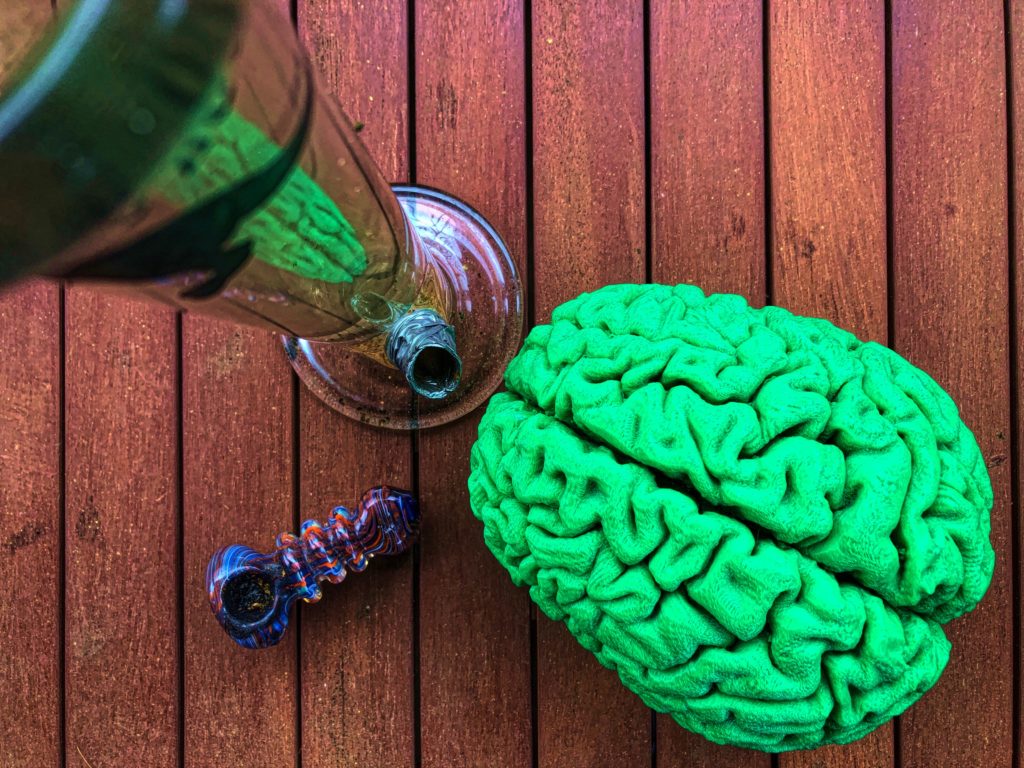
LEARN MORE: Cannabis Vaping: Existing and Emerging Modalities, Chemistry, and Pulmonary Toxicology
LEARN MORE: Emerging Evidence for Cannabis’ Role in Opioid Use Disorder
LEARN MORE: Marijuana legalization means fewer opioid deaths
LEARN MORE: Popping off (& pot) @ p:ear
Spoiler alert: Just because something labeled “food safe” is safe to eat, it doesn’t mean it’s safe to inhale! Dr. David Peyton at Portland State University, for example, identified dangerous levels of toxic formaldehyde in e-cigarette vapor.
LEARN MORE: Higher formaldehyde risk in e-cigarettes than previously thought
LEARN MORE: Flavoring Chemicals and Aldehydes in E-Cigarette Emissions
I joined the LRI team during (what they called) a “lull,” as they put a pause on the research and focused primarily on writing. They still taught me a whole heck of a lot, and I had a lot of fun with the bench work that was available, but being there for the writing process was a really interesting and valuable experience.
Here are a few of the interesting things that I learned.
A lot of rodent research is done only on male rodents, and doing otherwise is still looked down upon by some parts of the scientific community.
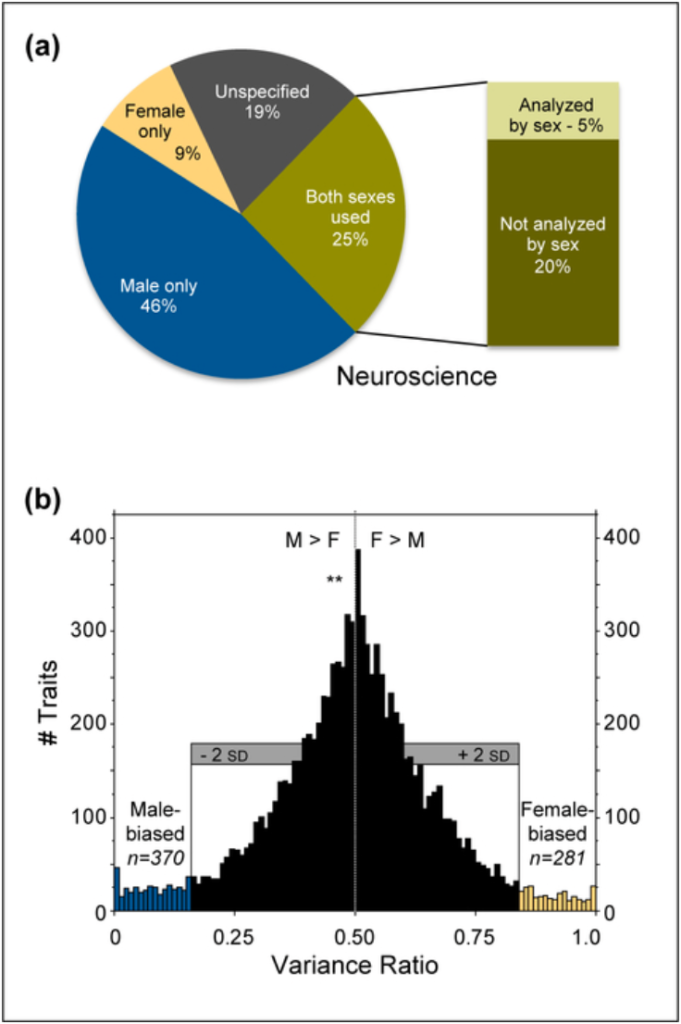
LEARN MORE: Inclusion of females does not increase variability in rodent research studies
For decades, (mostly male) scientists have suggested that female hormones will “ruin” data by introducing a greater amount of uncontrolled variability. Dr. Adie Rae and her team saw the shortcomings of these “standards,” and they use female rats despite the pushback that can come along with this.
Why? Because female brains and bodies do work differently than males sometimes, and the lack of research done on females means that a lot of the data and medicine that we have available to us isn’t relevant to half of the population.
That’s kind of a big deal, no?
This is especially problematic when you consider that statistically, women experience pain and conditions like PTSD with greater frequency than men, and cannot find suitable relief.
LEARN MORE: Inclusion of females does not increase variability in rodent research studies
LEARN MORE: Brains & Sex @ SfN
Studying isolated substances can sometimes mean overlooking important synergistic effects.
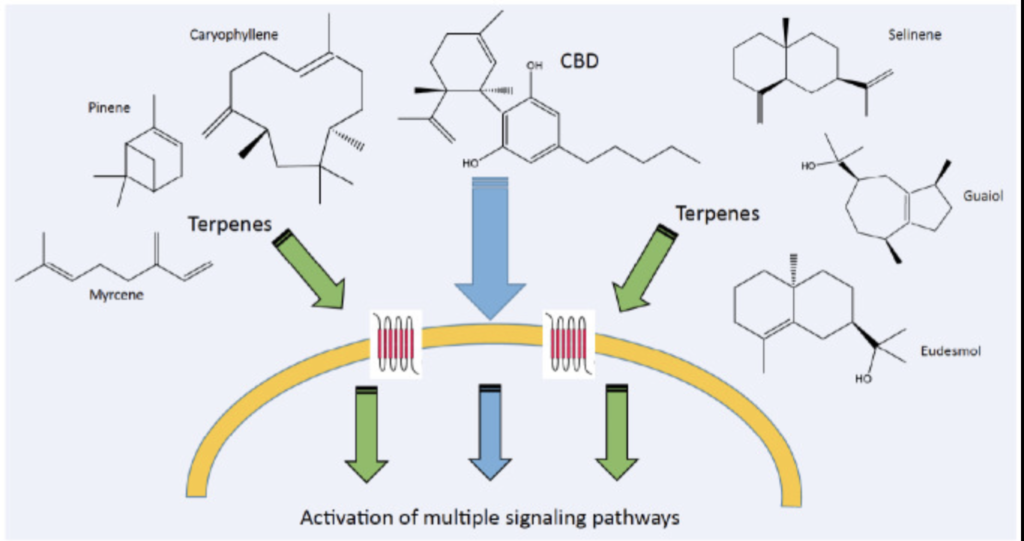
LEARN MORE: The Case for the Entourage Effect and Conventional Breeding of Clinical Cannabis: No “Strain,” No Gain
LEARN MORE: Waiting for the Entourage
One of my favorite things that I learned about while working on Adie’s team was about “The Entourage Effect.” Many neurobiologists focus their research on specific chemicals, or isolated components of plant matter, in order to understand how they function when consumed.
Since this lab studies the effects of cannabis, THC (a primary psychoactive compound of cannabis) is a relevant example. We know a lot about THC now, and the people that produce cannabis products have focused on creating consumables with high levels of it.

LEARN MORE: Cannabis, a complex plant: different compounds and different effects on individuals
LEARN MORE: Cannabis (Marijuana) and Cannabinoids: What You Need To Know
LEARN MORE: The Cannabis sativa Versus Cannabis indica Debate
LEARN MORE: Cannabis Genomics, Breeding and Production
LEARN MORE: The Cannabis Terpenes
However, since the effects of cannabis are seldom studied using the whole plant, many researchers have missed the potential synergistic effects that might occur when THC is ingested with, for instance, another cannabinoid known as cannabidiol, or CBD. CBD can actually reduce some undesirable effects of THC, suggesting that it might be important in any therapeutic preparation.
LEARN MORE: Taming THC: potential cannabis synergy and phytocannabinoid-terpenoid entourage effects
If you want to get published, you’ll likely be working with a very limited word count.
Those 14-page papers that I thought were long? I realize now that the researchers likely had to condense a lot of their work into what is, comparably, bite-sized. I always knew this on some level, but never understood the gravity of this until now. That means that we only get a small glimpse into the depth of the trial and error that goes into the polished results we see in the end. It’s pretty much like a highlight reel.
I have a huge amount of respect for the blood, sweat, and tears that go into what we don’t see.
Which leads me to one of my biggest takeaways…
One of the most rewarding aspects that I’m coming away with so far is the ability to understand research papers more than I could a year ago.
I remember the first time I tried to read a scientific peer reviewed article; it felt like I was reading a different language full of jargon that felt inaccessible to me. Frankly, it felt that way for months.
I used to have one tab open to Google and one tab open with the journal, and I’d frequently look up the definitions for the words I had never seen before. It was a great way to learn, but not a very efficient way to get through a 14 page piece.
Now that I’ve experienced the behind-the-scenes of what goes into a paper, I’m able to not only read it more efficiently, but also critique other papers and ask more pointed questions of their methods.
LEARN MORE: How to (seriously) read a scientific paper
And now, more about my experience!
During the few weeks that research was actively being conducted, I was able to get to know the rats and witness some really fascinating methods for monitoring drug effects on the animals.
Since the focus of this research was how CBD would affect opiate-addicted rats, the first step in the process is to get them addicted to opiates. I was able to help in some steps of creating the cannula “backpack” that the rats would wear for the duration of this part of the experiment.
I watched a few of the surgeries to implant the cannulas into the rats, conducted by my mentor, Mae. They were put to sleep, and small incisions were made to insert the tubes into their’ jugulars. They were sewn up, given pain relievers (that were bacon flavored, no less), and left to relax with the rest of the colony in the reverse light room.
Since rats are nocturnal, doing research on them requires that we trick them into thinking it’s night time when it’s our day time. We do this by keeping it dark in the room and using only red light to illuminate what we need to see, as some studies show that red lights don’t disturb the circadian rhythm of the animals.
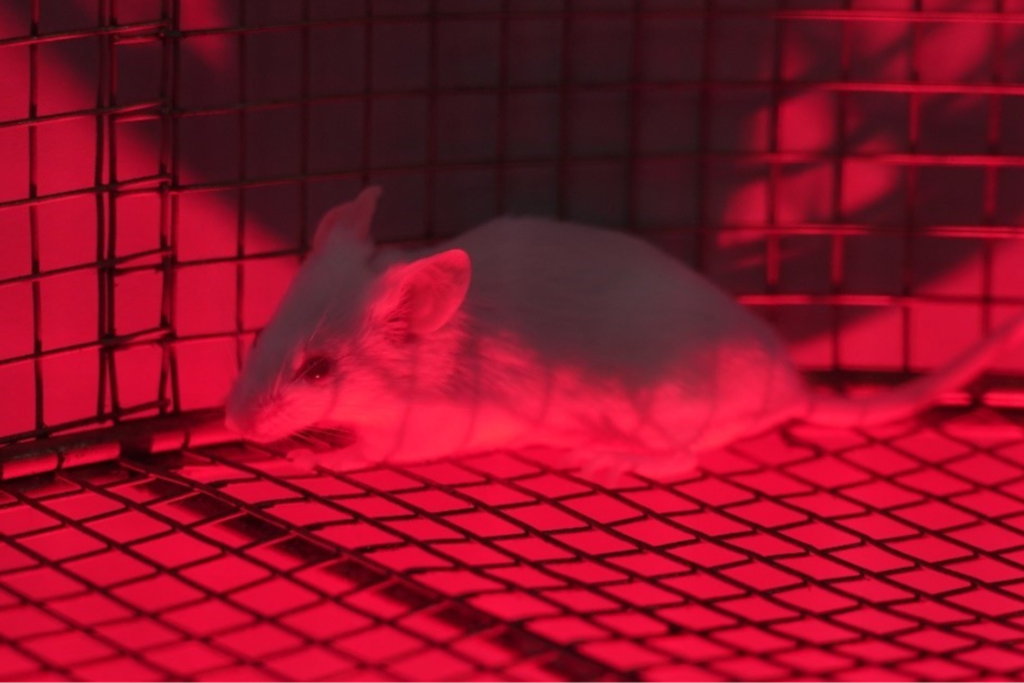
IMAGE SOURCE: A mouse in red light conditions.
Each day, the rats were hooked up to a device that looks similar to the drawing below. The box had a lever that was connected to a small amount of fentanyl. Each time the rat would press down on the lever, they would get a dose of the substance. The protocol is usually to start with a 1:1 ratio; that is, one push of the lever equals one dose. Then it increases to make it so that the rats need to push the lever more times in order to get the same amount, which tells us about how hard the animal is willing to work to get the substance (i.e. how strong their addiction is).
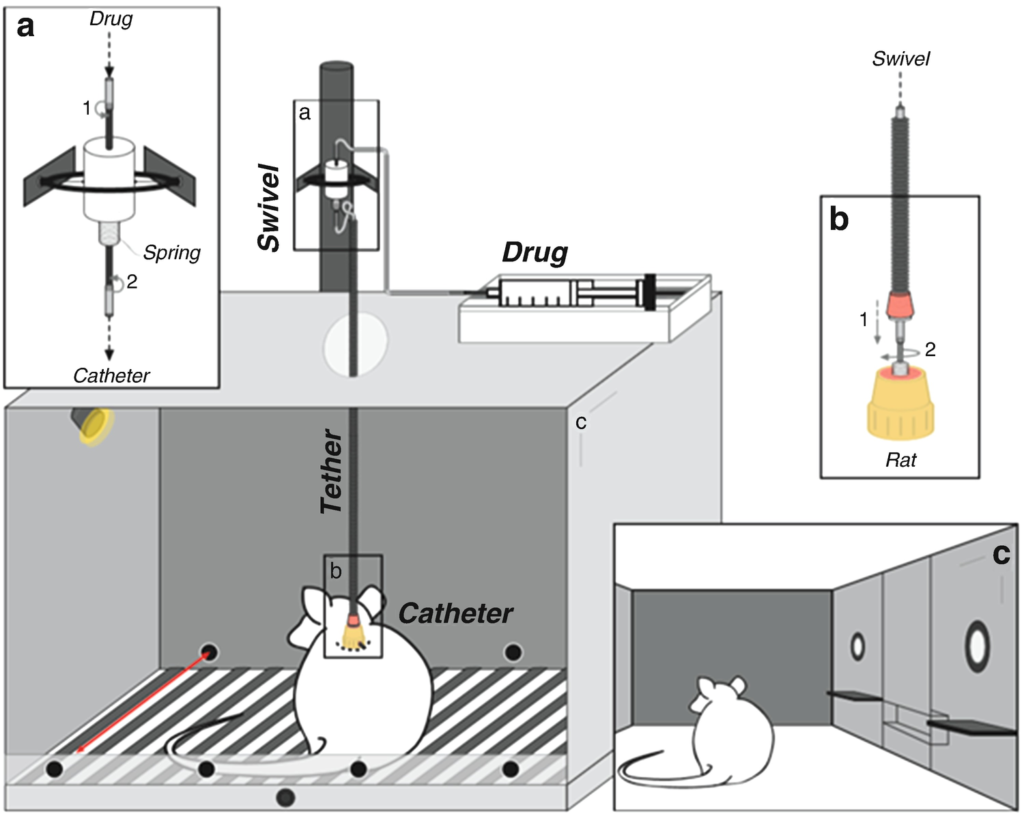
LEARN MORE: Drug Self-Administration as a Model to Study the Reward System
The following steps included an “extinction period” followed by introduction to CBD vapors, and various tests. (I wish I could speak more to this, but I wasn’t present for this portion!) Right before the rats are sacrificed at the end of the experiment, they are put under while their blood is collected. It’s important that this is done while the animal is still alive because postmortem blood samples aren’t as accurate for the purposes of a study like this.
LEARN MORE: Biochemistry Changes That Occur after Death: Potential Markers for Determining Post-Mortem Interval
Some of the animals also had their lungs extracted so that the tissue could be studied for the effects of the vapors. Since the brain wasn’t specifically being studied this time around, I was given the chance to practice extracting and preserving a brain for the first time.

This feels like the beginning of a really exciting opportunity, and I’m so grateful to be connected with the team at Legacy Research Institute. Thank you for the training and experience, and I look forward to contributing and learning more in the days to come!


